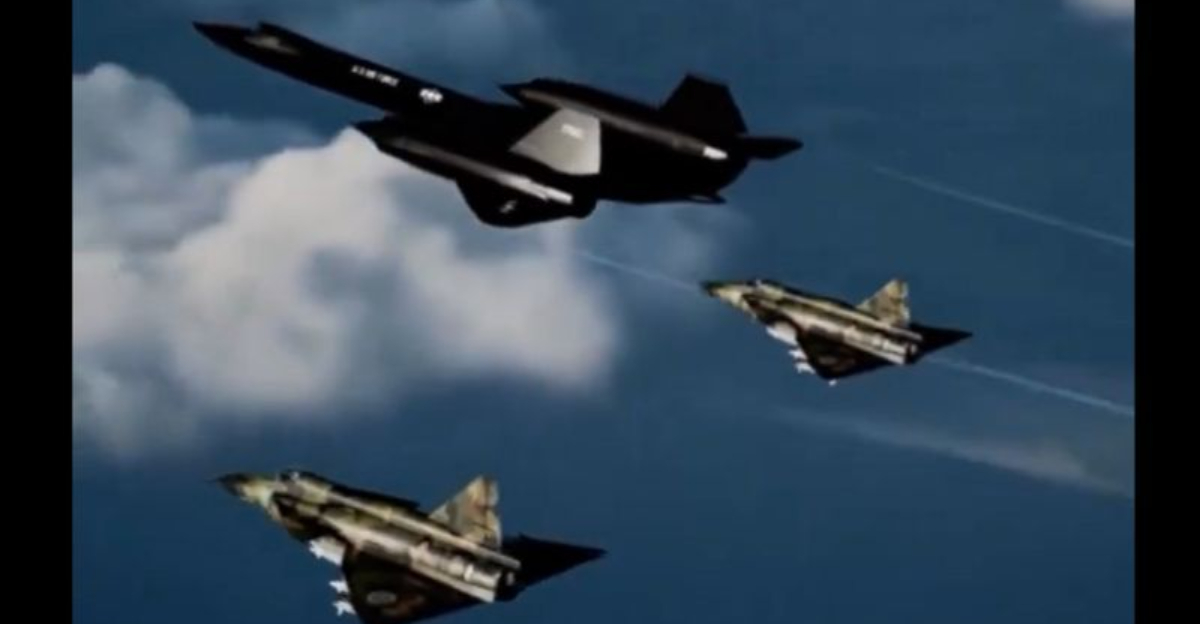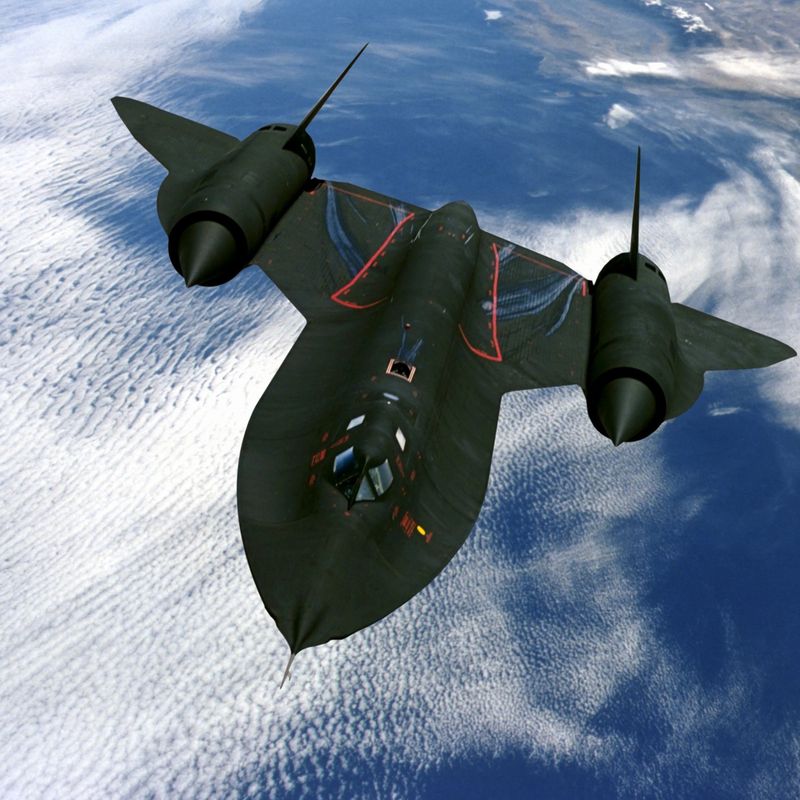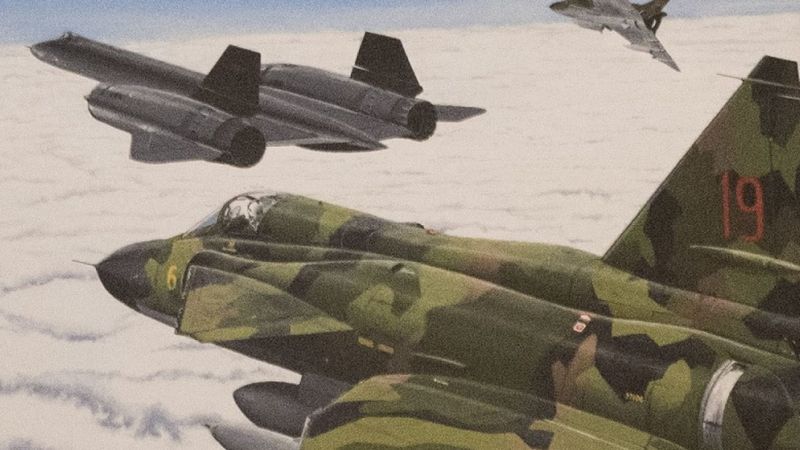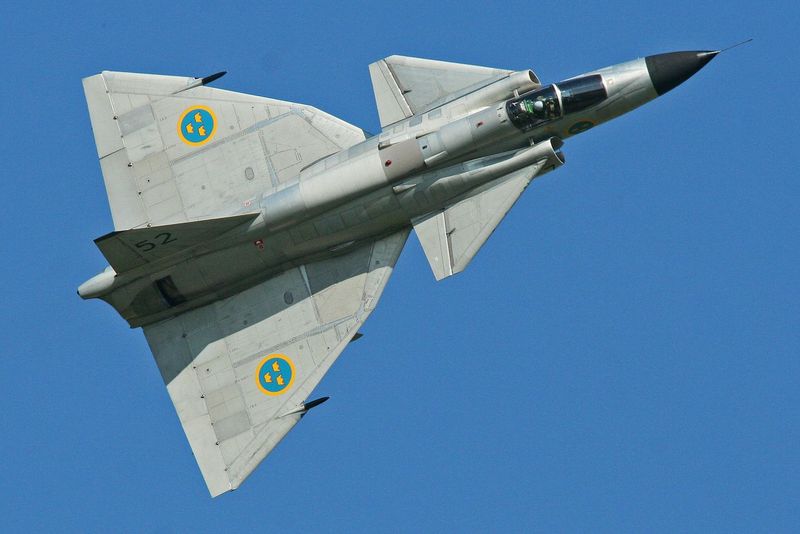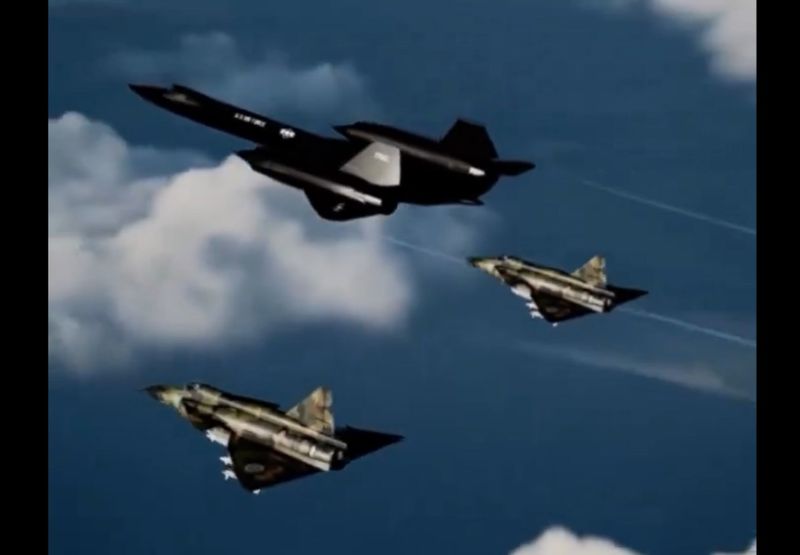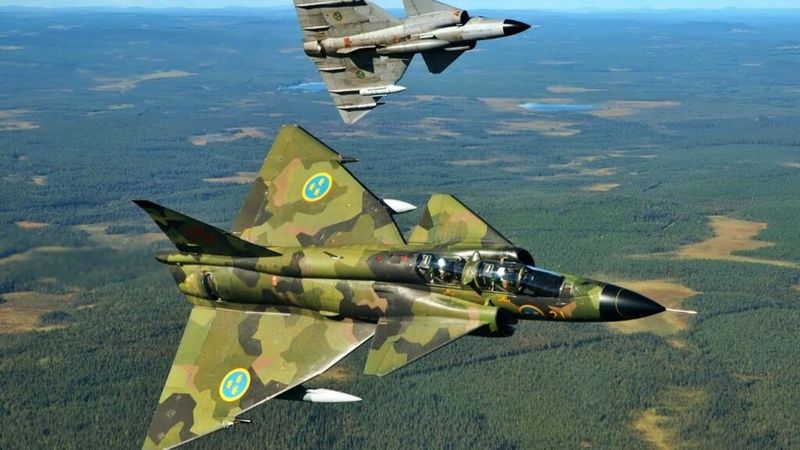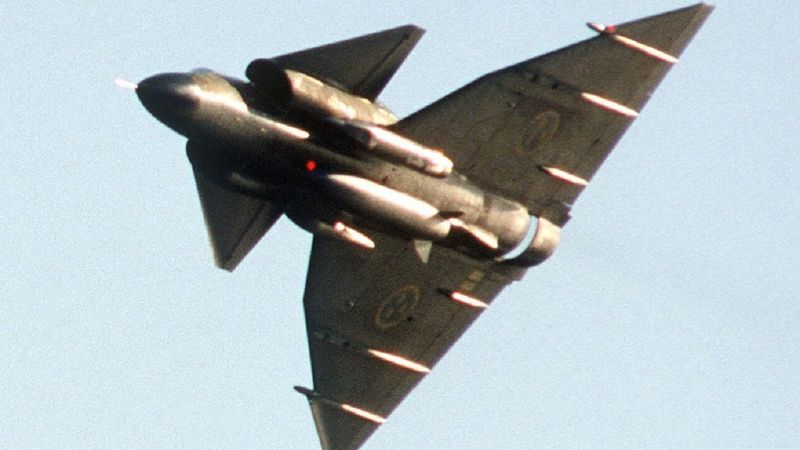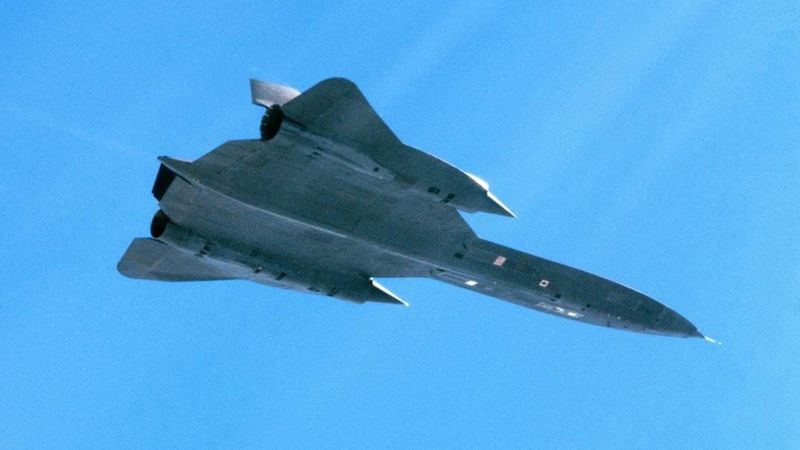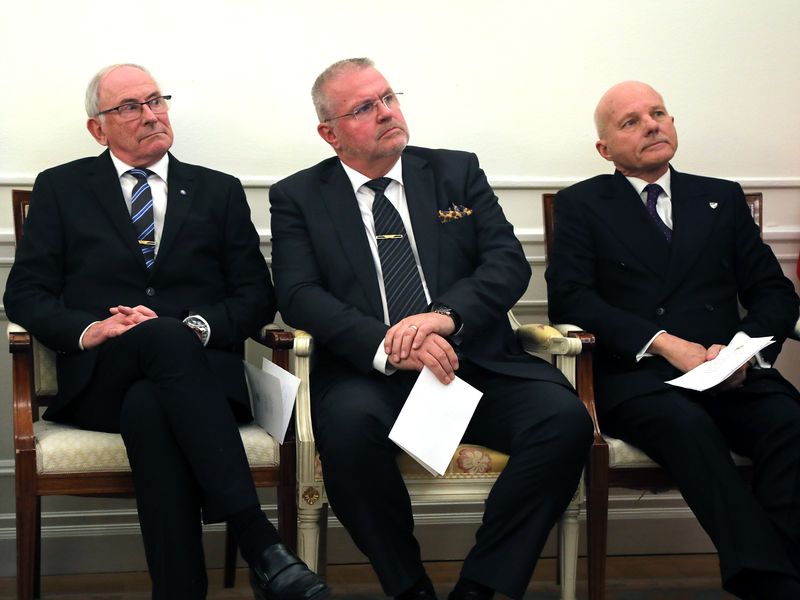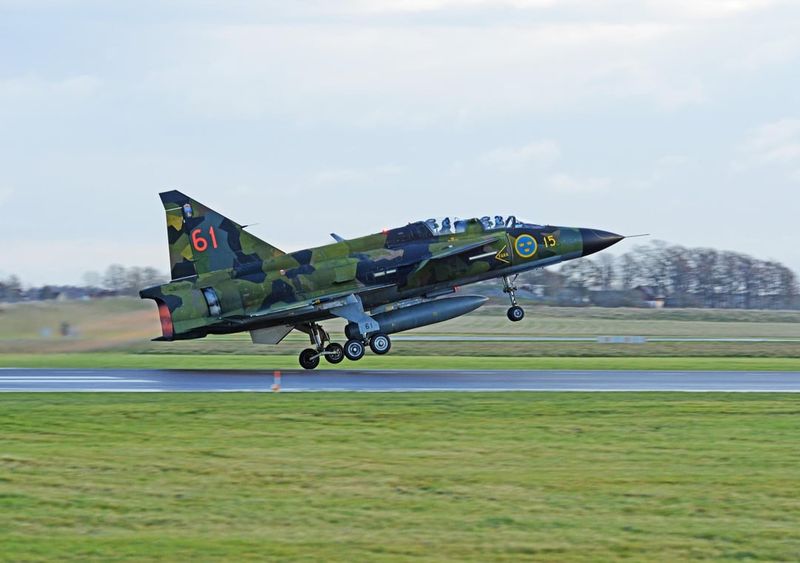During the height of the Cold War, an unexpected aerial drama unfolded over the Baltic Sea. A damaged American spy plane found itself in a precarious situation, vulnerable to Soviet interception.
What happened next would remain secret for decades—a neutral country’s fighter jets came to the rescue in a moment that defied Cold War divisions and possibly prevented an international incident.
1. The SR-71 Blackbird: America’s Untouchable Spy Plane
Cruising at three times the speed of sound and altitudes reaching 75,000 feet, the SR-71 Blackbird was practically invincible. Most aircraft and missiles simply couldn’t reach it.
Developed by Lockheed’s secretive Skunk Works division, this sleek black giant gathered intelligence by flying over hostile territory faster than bullets. Its titanium skin could withstand extreme temperatures generated by air friction.
When functioning normally, the Blackbird was untouchable. But on June 29, 1987, one of its twin engines failed, forcing a dramatic descent into dangerous airspace where it became suddenly vulnerable.
2. Engine Failure at the Worst Possible Time
Catastrophe struck without warning. While conducting reconnaissance over the Baltic Sea, one of the SR-71’s powerful J58 engines suddenly failed. The pilots had no choice but to rapidly descend from their safe perch above 70,000 feet.
Plummeting to approximately 25,000 feet, the crippled Blackbird entered a zone where Soviet interceptors could easily reach it. The timing couldn’t have been worse – this was 1987, still deep in Cold War tensions.
Every minute at this vulnerable altitude increased the risk of Soviet fighters scrambling to intercept what would be an intelligence goldmine if captured.
3. Sweden’s Careful Cold War Balancing Act
Sweden walked a diplomatic tightrope throughout the Cold War. Officially neutral, the Nordic nation maintained this status through vigilant defense preparations and constant monitoring of surrounding airspace.
Swedish radar operators tracked both NATO and Warsaw Pact aircraft with equal attention. Their air defense force remained perpetually ready, with pilots on standby to scramble at a moment’s notice.
This vigilance wasn’t paranoia – Swedish airspace had been violated numerous times by Soviet aircraft. The Swedes had developed sophisticated procedures for intercepting foreign aircraft without triggering wider conflicts – expertise that would soon prove invaluable.
4. The Saab 37 Viggen: Sweden’s Cold War Guardian
Four delta-winged silhouettes rocketed skyward after radar operators detected an unidentified aircraft descending rapidly into Swedish monitoring zones. The Saab 37 Viggen was Sweden’s homegrown defender – a remarkable feat of engineering from a country of just eight million people.
Nicknamed “Thunderbolt,” these fighters could operate from highways and forest clearings if bases were attacked. Their distinctive canard design and powerful engines gave them exceptional maneuverability.
Pilots Lars-Erik Blad, Roger Möller and their wingmen pushed their Viggens to maximum speed, racing to intercept what they initially believed might be a Warsaw Pact intruder.
5. The Moment of Recognition: Allies in Trouble
Shock rippled through the Swedish pilots as they closed in on the mysterious aircraft. The unmistakable outline of an SR-71 Blackbird emerged – an American spy plane clearly in distress.
Radio silence prevailed as Cold War protocols prohibited direct communication between the neutral Swedes and NATO aircraft. The Swedish pilots could see the Blackbird struggling to maintain altitude and speed – a sitting duck for Soviet interceptors patrolling nearby.
A split-second decision faced the Viggen pilots: follow neutrality protocols to the letter or recognize the human emergency unfolding before them? Their choice would later make history.
6. An Unprecedented Escort Mission
Without hesitation, the Swedish Viggen pilots positioned their aircraft in protective formation around the vulnerable Blackbird. Though officially neutral, human lives and potential international crisis took precedence over political posturing.
The Viggens expertly guided the damaged spy plane through Swedish airspace toward NATO-controlled territory. Soviet fighters, detecting the aircraft but seeing the Swedish escort, kept their distance rather than risk confrontation with a neutral nation.
For nearly 20 minutes, these Cold War adversaries flew in unprecedented cooperation. The SR-71’s crew later reported their relief at seeing the Swedish fighters appear – a sight that meant safety amid potential disaster.
7. The Classified Cold War Secret
For over three decades, this remarkable incident remained hidden in classified files. Sweden’s officially neutral stance made acknowledging assistance to a NATO spy plane diplomatically impossible during Cold War tensions.
Both American and Swedish authorities maintained strict silence. The pilots involved were sworn to secrecy, unable to share their extraordinary story even with family members.
Only in 2018, long after the Soviet Union’s collapse, did declassification finally allow this story to emerge. Military historians were stunned to discover this moment of humanity transcending the rigid Cold War divisions – a secret that had been successfully kept for an entire generation.
8. Safe Landing: Mission Accomplished
After the Swedish escorts guided them to safety, the SR-71 crew still faced the challenge of landing their damaged aircraft. Operating with just one functioning engine, they navigated carefully to an emergency landing site.
Thanks to the Viggens’ protection, Soviet interceptors never had the opportunity to engage the vulnerable spy plane. The classified mission, despite the emergency, was completed without loss of the irreplaceable aircraft or its crew.
Military aviation experts later noted how remarkable this outcome was. Engine failures in the Blackbird were extremely rare, and surviving one without capture or crash over hostile territory was considered almost miraculous.
9. Recognition Decades Later: Heroes Finally Honored
A ceremony at the U.S. Embassy in Stockholm in 2018 finally brought long-overdue recognition. Four Swedish pilots received the Air Medal – one of America’s highest honors for aerial achievement.
Lars-Erik Blad and Roger Möller, now in their 70s, stood proudly as U.S. Air Force officials pinned medals to their civilian attire. “We were just doing our job,” Möller stated humbly, despite the extraordinary nature of their actions.
The ceremony represented more than personal recognition – it acknowledged a moment when military professionals chose humanitarian principles over rigid Cold War divisions, possibly preventing an international incident that could have escalated dangerously.
10. The Viggen: Sweden’s Engineering Marvel
Sweden’s remarkable Saab 37 Viggen wasn’t just any fighter jet. Designed to operate from improvised runways as short as 500 meters, it featured unique thrust reversers allowing it to land on icy roads or forest clearings if necessary.
The aircraft’s innovative double-delta wing and canard design gave it exceptional maneuverability at both high and low speeds. Swedish engineers had created this advanced fighter despite limited resources compared to superpower military budgets.
The Viggen’s capabilities matched Sweden’s defensive strategy perfectly – a fast-response protector for a neutral nation determined to maintain sovereignty between Cold War giants. This engineering marvel became a symbol of Swedish independence and ingenuity.
